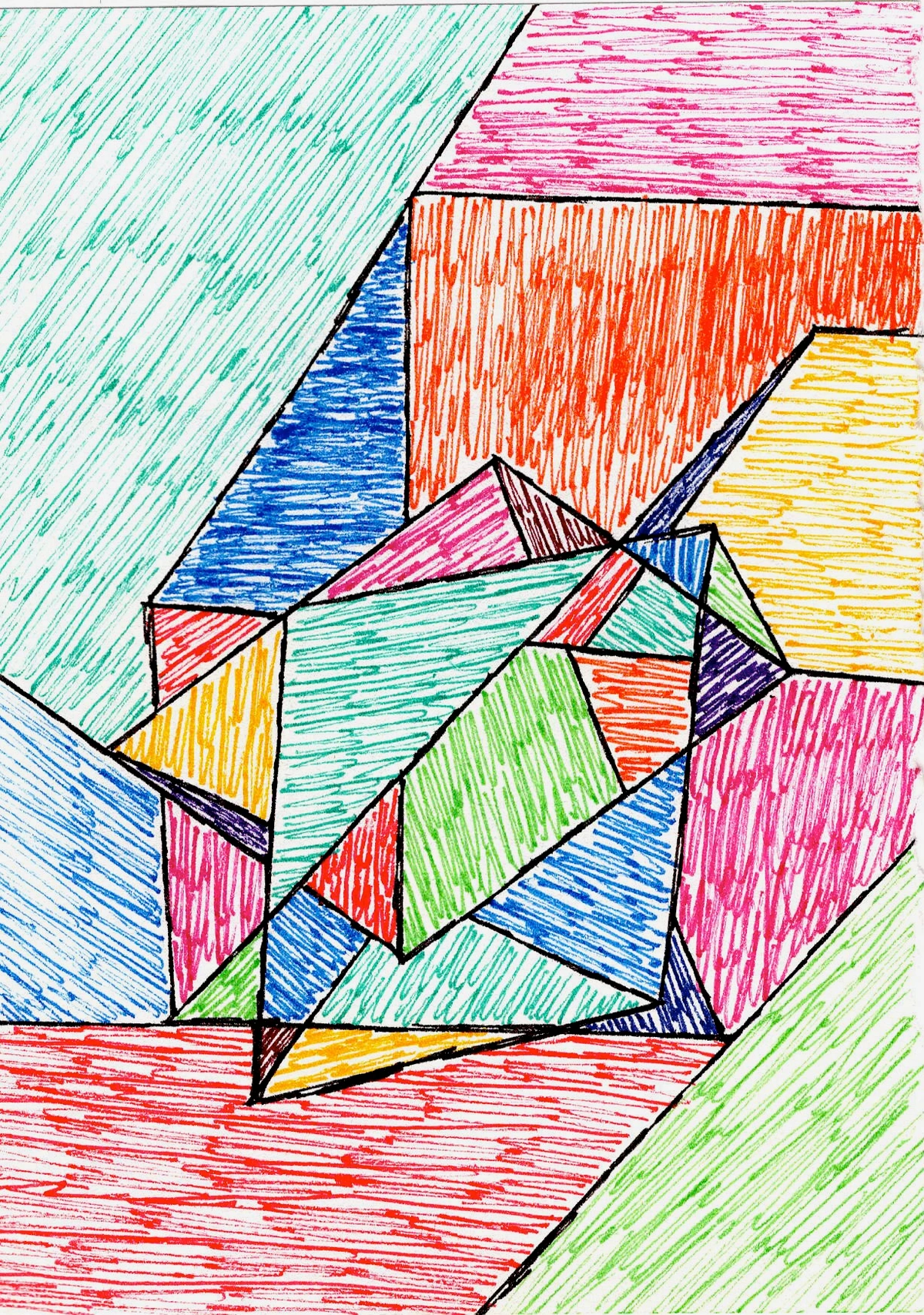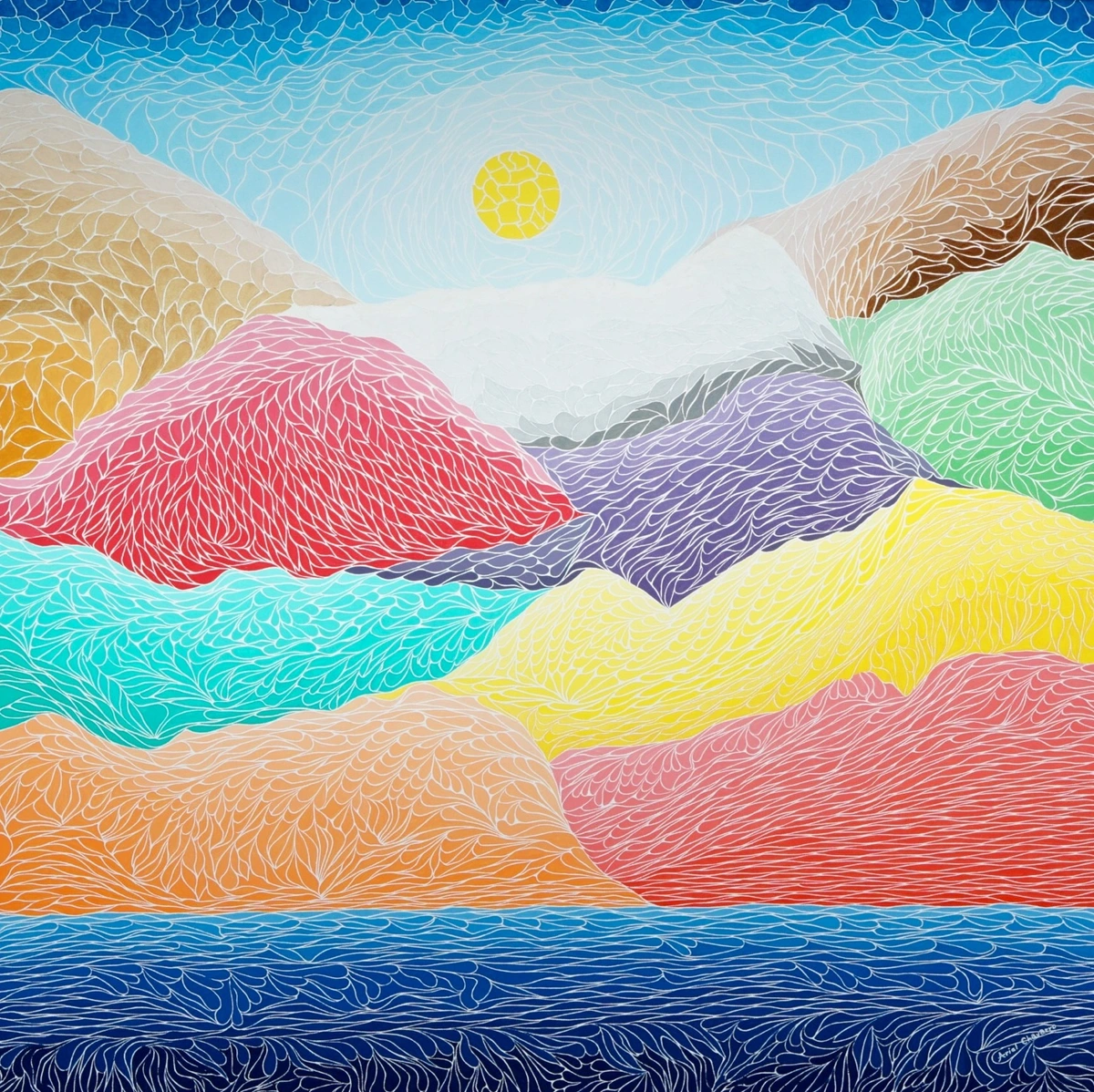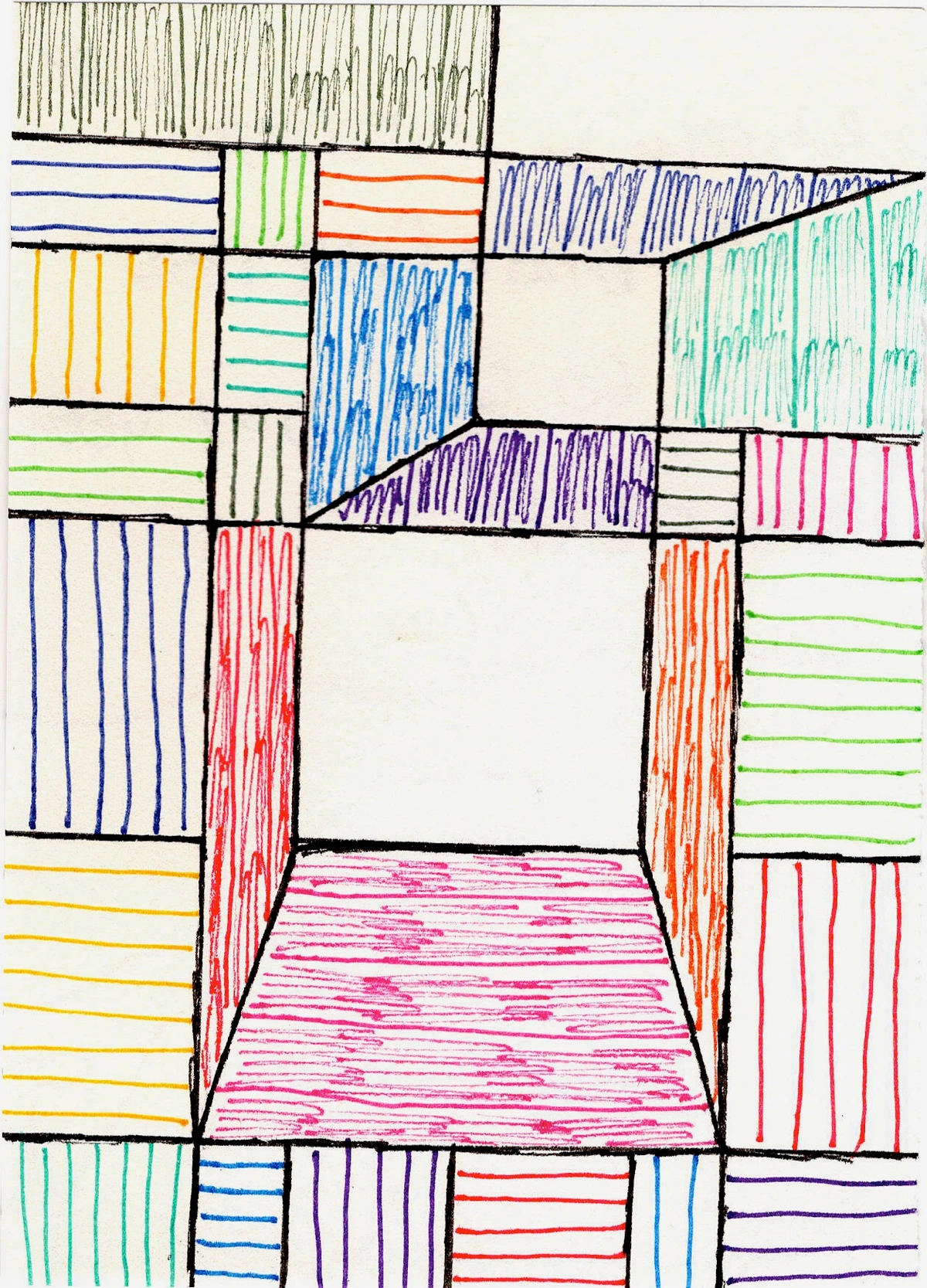
Giclée Prints Explained: An Artist's Candid Guide to Fine Art Reproductions
An artist's candid journey demystifying Giclée prints. Discover the archival quality, vibrant detail, and collector value of these museum-grade art reproductions for your home.
What's the Big Deal with Giclée Prints Anyway? My Honest Take.
I remember when I first heard the term "Giclée print." Honestly? My eyes probably glazed over a bit. It sounded fancy, pretentious even, and my initial thought was, "Is this just a glorified inkjet print with a French accent?" I mean, come on, Giclée – it literally means "to spray" or "to squirt" in French. Not exactly the most poetic origin for something considered "fine art." But, like with many things in life, a little curiosity (and perhaps a stubborn desire not to sound completely clueless) led me down a rabbit hole, and what I found completely changed my perspective. Now, as an artist, offering Giclée prints of my own abstract art, I can tell you: it's anything but pretentious. It's about making high-quality art accessible, durable, and truly beautiful. This article is my way of demystifying Giclée, sharing the magic behind it, and why it's such a valuable addition to any art collection.
So, What Exactly IS a Giclée Print? (And Why Does it Matter?)
Let's cut through the fancy French facade. At its heart, a Giclée print is a type of inkjet print. "Wait," I hear you thinking, "didn't you just say it wasn't a glorified inkjet?" Yes, I did. Because calling it just an inkjet print is like calling a Michelin-starred meal just food. The difference is in the how and the what, and that difference is monumental.
Giclée printing emerged in the late 1980s and early 1990s as a revolutionary method to produce high-quality, long-lasting reproductions of original artwork using digital technology. Before Giclée, artists relied on more traditional, often costly, and less color-accurate methods like lithography or serigraphy for reproductions. The advent of high-resolution digital scanners and specialized inkjet printers, initially developed for industrial design, paved the way. It started as a way for artists to create limited editions of their digital art or photographic works, but quickly found its place in reproducing traditional paintings, bridging the gap between physical art and digital precision.
Giclée prints are created using professional-grade, large-format inkjet printers that employ highly refined, pigment-based archival inks. These aren't your home office inks that fade if you look at them funny; we're talking about meticulously engineered color particles suspended in a solution, designed for incredible stability. And the paper? Oh, the paper! We're talking museum-quality, acid-free substrates designed to last a lifetime (or several, if we're being honest).
I've spent countless hours in front of my own canvas, mixing colors, layering textures, and trying to capture that perfect nuance that brings a piece to life. The thought of all that effort being lost in a dull, cheap reproduction? Shudder. Giclée technology allows for an incredibly accurate reproduction of the original artwork, capturing everything from the vibrant colors I use to the subtle nuances of line and form. It's like having a tiny, perfect twin of my original painting, minus the brushstrokes you can feel with your fingers. (Though some textured papers can even mimic that feel!)

The Magic Behind the Quality: Why Artists (Like Me) Choose Giclée
Okay, so it's not just an inkjet. What are the secret ingredients that elevate it? It comes down to a few critical components that guarantee both beauty and longevity.
1. Archival Inks: The Fountain of Youth for Art
This is a big one. Giclée prints use pigment-based inks, not dye-based inks (which are common in cheaper prints). Think of it this way: dye inks are like a thin wash of watercolor – the color particles are dissolved and less stable. Pigment inks, on the other hand, are like tiny, solid flecks of acrylic paint, suspended in a solution. These pigment particles are far more stable and resistant to environmental factors like UV light, humidity, and atmospheric pollutants. What does that mean for you? It means your print won't fade into oblivion after a few years hanging on a sunny wall. We're talking a lifespan of 100-200 years without significant fading, under proper display conditions. Imagine that! Art that can truly become an heirloom.

2. Museum-Quality Substrates: More Than Just Paper
The surface your art is printed on makes a colossal difference. Giclée prints are typically produced on various acid-free, lignin-free papers and canvases. These aren't just fancy terms; they mean the materials won't yellow, become brittle, or degrade over time, ensuring the integrity of the print for decades. We're talking thick, luxurious fine art papers like Hahnemühle Photo Rag or Somerset Velvet, often made from 100% cotton rag or alpha-cellulose. But the choices are vast: from smooth, matte papers that absorb light and convey a soft, painterly feel, to semi-gloss baryta papers that offer incredible depth and detail, mimicking traditional darkroom prints. For my abstract pieces, I often pick papers that can hold the vibrancy and depth of the composition beautifully, sometimes even with a subtle texture that adds to the sensory experience. And the feel of these papers? It's tangible quality – the weight, the tooth, the way they absorb the ink, it all contributes to the print feeling substantial and precious.
3. Unmatched Resolution and Color Fidelity: Seeing Every Detail
High-end Giclée printers boast incredible dot per inch (DPI) capabilities – far beyond what your typical home printer can achieve. This, combined with a wider color gamut than traditional printing methods, results in prints with stunning detail, smooth color transitions, and a richness that truly reflects the original artwork. To ensure this fidelity, professional Giclée printers (and artists like myself) meticulously manage color. This involves color calibration of monitors and printers, and the creation of custom ICC profiles for each printer and paper combination. Think of an ICC profile as a digital blueprint that guarantees the colors you see on the screen are the colors you get on the print. It's the closest thing you can get to owning the original, short of actually owning the original. And trust me, I'm picky about my design choices and how they translate!

The Giclée Process: From My Original to Your Wall
My journey from a completed painting to a beautiful Giclée print involves several careful steps, ensuring that the final print truly embodies the original's spirit. First, the original artwork is professionally photographed or scanned at an extremely high resolution. We're talking gigabytes of data here, capturing every minute detail and color with tools like high-end cameras or drum scanners. Then, I work closely with a specialist Giclée printer, a true artisan in their field. Together, using professional software like Adobe Photoshop, we fine-tune color accuracy, often making minor adjustments to match the print to the original as closely as possible. It's a meticulous process, but it's worth it to know that the essence of my work is being preserved and shared in the best possible way. This hands-on involvement is what truly differentiates an "artist-grade" Giclée from a generic commercial print – it's about passion and precision at every stage.
Beyond the Basics: Artist's Proofs and Authenticity
When you're diving into the world of fine art prints, you'll sometimes hear about "Artist's Proofs" (APs). These are prints, usually a very small percentage of a limited edition, reserved by the artist for their own archive or for special sales. They are typically identical in quality to the main edition prints but are often marked "AP" and numbered separately (e.g., AP 1/5). For collectors, owning an Artist's Proof can feel like a slightly more intimate connection to the artist's personal collection, though their market value is generally similar to the main edition.
And how do you know you're getting the real deal, a genuine, high-quality Giclée? A legitimate Giclée print, especially a limited edition, will almost always be signed and numbered by the artist. It should also come with a Certificate of Authenticity (COA) from the artist or gallery, detailing the edition size, print date, materials used, and the artist's signature. If a print lacks these elements, or if the paper feels flimsy and the colors look dull, you're likely not holding a true Giclée. Trust your gut, and always buy from reputable sources.
Limited Edition vs. Open Edition Giclée Prints: What's the Difference for Your Collection?
So, what's the real difference between a print you can buy endlessly and one that's truly scarce? When browsing Giclée prints, you'll often encounter these two terms, and it's an important distinction for collectors:
- Limited Edition: These prints are produced in a finite quantity. Each print is typically signed and numbered by the artist (e.g., 1/50, 2/50, etc.) and often comes with a Certificate of Authenticity. Once the edition sells out, no more prints of that image will be produced by the artist in that size or format. Limited editions generally hold higher value due to their scarcity and the artist's direct involvement in their creation and authentication.
- Open Edition: These prints can be reproduced indefinitely. While still high-quality Giclée prints, they are not numbered or typically signed, making them more accessible in price and availability. They're a fantastic way to enjoy beautiful art without the investment considerations of a limited edition.
Beyond the Technicalities: Why Giclée is a Smart Choice for Collectors
So, if you're looking to start or expand your art collection, why should Giclée prints be on your radar? It's not just about what they are, but what they represent for you as a collector.
Accessibility Without Compromise
Original art, especially from established artists, can be quite expensive. Giclée prints offer an incredible opportunity to own a high-quality reproduction of a beloved piece at a more accessible price point. It democratizes art, allowing more people to bring museum-quality pieces into their homes. It's why I offer them—I want my art to reach more people than just the lucky few who can snag an original. If you're looking to buy my art, you'll find a selection of Giclée prints available.
Potential for Investment
While originals usually hold the highest investment value, limited edition Giclée prints, signed and numbered by the artist, can also appreciate over time, especially as the artist's career grows. Think of it as investing in a piece of an artist's journey (maybe even checking out my timeline for context!). It's not a stock tip, mind you, but it's a tangible asset that brings joy and beauty to your life, which, to me, is its own kind of return.
Authenticity and Connection
A good Giclée print captures the spirit and intent of the original work. It's not just a poster; it's a carefully crafted reproduction overseen by the artist. When you look at an abstract Giclée print, you're still engaging with the artist's vision, their meaning in non-representational works, and the emotional impact they intended. For me, seeing my vibrant, complex originals faithfully translated into a Giclée print is incredibly satisfying – it's like sharing a piece of my soul, knowing its integrity is intact.

Taking Care of Your Giclée Print (A Little TLC Goes a Long Way)
Just like any valuable artwork, Giclée prints benefit from a bit of care. Protecting them ensures they maintain their vibrancy and archival quality for generations.
- Framing: Use archival-quality mats and backing boards, and consider UV-protective glass to further guard against fading. I often advise professional framing to ensure longevity. This isn't just about aesthetics; it's about creating a protective environment for your investment.
- Light: Avoid direct sunlight or harsh UV light. While the inks are archival, prolonged exposure can still have an impact. Think of it like sunscreen for your art!
- Humidity: Keep prints in a stable environment, away from extreme temperature or humidity fluctuations. Bathrooms or damp basements are generally a no-go for valuable art.
Giclée and the Environment: A Quick Thought
While the focus is often on the longevity of the prints themselves, it's worth noting that many Giclée studios are increasingly adopting environmentally conscious practices. This includes using sustainably sourced papers (like those made from bamboo or hemp, often carrying certifications like FSC), reducing waste through efficient printing, and employing energy-efficient processes. It's a small but growing aspect that aligns with the modern collector's values, offering a guilt-free way to enjoy beautiful art.
Frequently Asked Questions About Giclée Prints
Question | Answer |
|---|---|
| Is a Giclée print a digital print? | Yes, it is a high-quality digital inkjet print made with specific pigment-based archival inks and acid-free, museum-quality substrates. |
| How long does a Giclée print last? | With proper care and archival materials, a Giclée print can last 100-200 years without significant fading or degradation, making it a true heirloom. |
| Are Giclée prints considered fine art? | Absolutely! They are widely accepted by galleries, museums, and art collectors as a legitimate and high-quality form of fine art reproduction, especially when produced as limited editions by the artist. |
| What's the difference between a Giclée and a regular inkjet print? | The key differences are the use of pigment-based archival inks (vs. less stable dye-based inks), acid-free museum-quality substrates, precise color management, and higher resolution printing, all contributing to superior longevity, color fidelity, and detail. It's the difference between a high-end specialty item and a standard consumer product, much like a gourmet meal versus fast food. |
| Can I frame a Giclée print myself? | You can, but for the best results and long-term protection of your artwork, professional framing with archival materials and UV-protective glass is highly recommended. It ensures the print is properly protected from environmental factors. |
| How does Giclée compare to other print methods like screen printing or lithography? | Giclée excels in reproducing fine detail, photographic imagery, and broad color gradients with incredible accuracy, making it ideal for painterly effects and complex visual textures. Screen printing is known for bold, flat colors and unique textures, often used for graphic designs. Lithography offers rich, nuanced tones through oil-based inks and allows for larger editions but typically with a more limited color range than Giclée. Each method has its unique aesthetic, but Giclée offers unparalleled fidelity to original paintings and photographs. |
Final Thoughts: More Than Just a Print, It's an Investment in Beauty
So, there you have it. My not-so-secret love affair with Giclée prints. What started as a skeptical inquiry turned into a genuine appreciation for a technology that allows artists like me to share our creations with a broader audience without compromising on quality or longevity. It's more than just a reproduction; it's a commitment to preserving the integrity of the art and ensuring it can be enjoyed for generations. Whether you're a seasoned collector looking for high-quality additions or just starting to dip your toes into the art world, I truly believe a well-produced Giclée print is a fantastic way to bring beauty and meaning into your space. It's an accessible investment in lasting joy. Maybe even stop by my museum in 's-Hertogenbosch sometime and see some originals (and prints!) for yourself. I'd love to chat about it.




